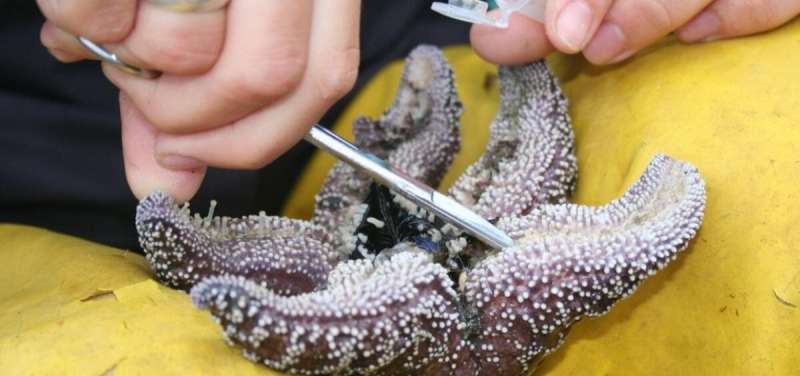
Healthy-looking ochre sea stars have minimal genetic difference from those displaying symptoms of sea star wasting syndrome, say Oregon State University researchers who examined whether genetic variation was the reason some animals went unaffected during an epidemic of the deadly disease.
Also called the purple ochre and known scientifically as Pisaster ochraceus, the ochre sea star saw its populations hit hard for three years starting in 2013 by a wasting syndrome epidemic that scientists believe to be the largest marine wildlife disease event in history.
“A changing climate is causing the ocean to warm and those rising sea water temperatures are putting more and more stress on marine ecosystems,” said Burton, who led the genetic variation study. “As a result of that stress, marine diseases have become more prevalent over the last few decades. Disease outbreaks cause changes in ecosystems’ community structure and the age distribution within species. A lot of marine taxa have suffered severe declines in population because of outbreaks.”
Wasting syndrome affected populations of 20 species of sea stars ranging from Baja California to the Gulf of Alaska, including P. ochraceus, considered a keystone species—one on which other species in an ecosystem lean heavily. The ochre sea star was pummeled over a large portion of its range. Along the Oregon coast, for example, the researchers note that populations underwent declines ranging from 50% to 94%.